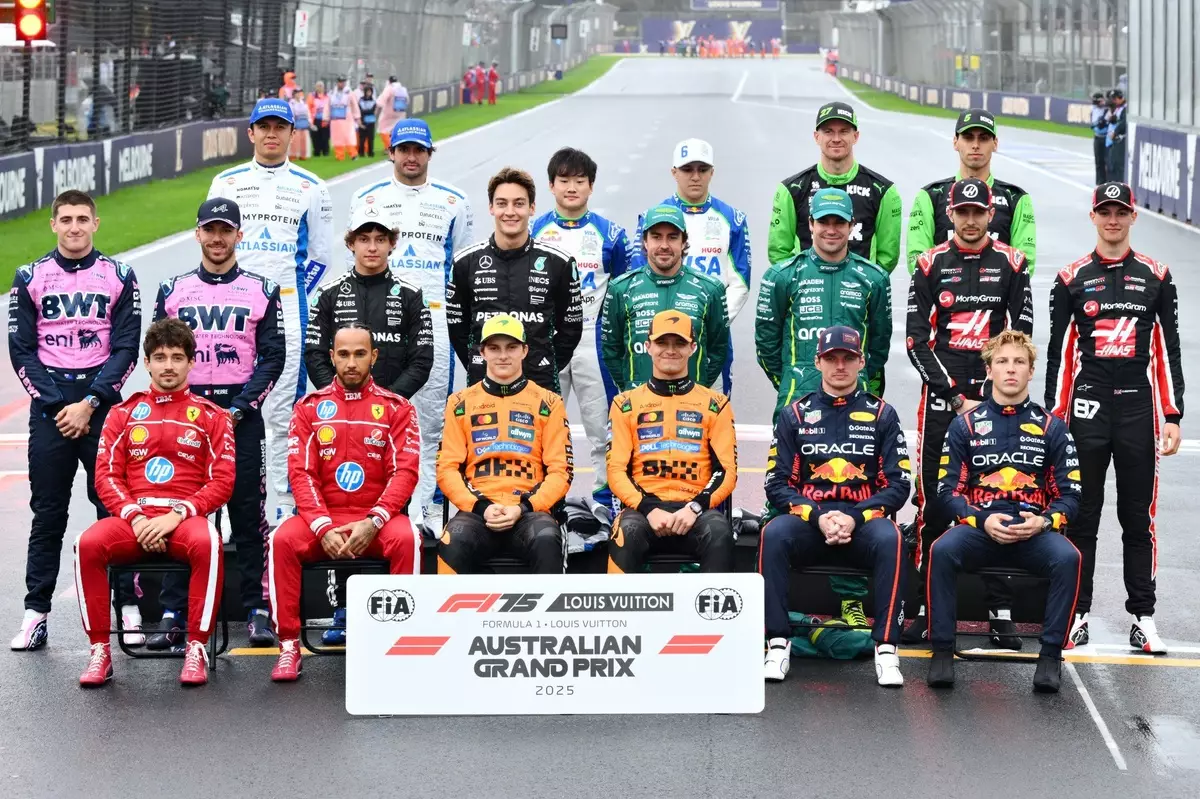As the current Formula 1 season progresses toward its midpoint, a familiar yet relentless buzz circulates through paddock chatter: the swirling gossip of driver line-ups for 2026. Unlike in past years, where speculation would often simmer quietly, this period is marked by an almost feverish race to predict— or influence— who will occupy the sport’s most coveted seats. Behind this frantic anticipation lies more than idle gossip; it signals a pivotal moment where the future fabric of F1 is being stitched in real time. The stability of some teams, the ambitions of others, and the contractual nuances of stars like Max Verstappen and George Russell all converge into a high-stakes chess game, with each move potentially shifting the sport’s power dynamics for years to come.
The Verstappen Enigma: A Contract in Flux?
At the heart of this driver roulette stands Max Verstappen, reigning world champion and arguably the most dominant force on the grid today. Despite his definitive contract with Red Bull until 2028, whispers persist that the terms may not be as ironclad as they appear. Reports of performance-related clauses—potentially allowing Verstappen to exit if certain benchmarks aren’t met—have fueled speculation that his future in the team might be less secure than the contractual language suggests.
What complicates matters further is the transition Red Bull is undergoing. With Christian Horner’s departure, the untested Ford-backed Red Bull Powertrains setup, and the team’s recent struggle to match the unrelenting Verstappen in outright pace, the Dutchman’s position appears more precarious than ever. His supreme talent makes him a highly sought-after asset, particularly for teams eager to cultivate a champion, with Mercedes boss Toto Wolff reportedly keen on luring Verstappen if the stars align.
Should Verstappen decide to seek greener pastures, the open secret remains: Mercedes is arguably the most plausible candidate to ferry him into a new era of dominance. The German giants have long admired Verstappen’s raw speed and racecraft, and with their current driver line-up at a crossroads—especially considering Lewis Hamilton’s contract status—both sides might find a mutually beneficial crossroad ahead. However, the decision is not solely reliant on Verstappen’s wishes; the performance of the Red Bull project, alongside the competitive landscape involving Ferrari, McLaren, and Mercedes, will influence his calculus.
Who Will Fill the Vacuum at Red Bull?
The potential departure of Verstappen creates an immediate vacancy that ripples across the grid. While the second Red Bull seat has traditionally been less glamorous, recent performances, team dynamics, and the upcoming driver market make it a highly contentious spot. Yuki Tsunoda, currently out of contract, faces renewal doubts, and Isack Hadjar’s strong performances with Red Bull’s sister team could see him promoted, but doubts about experience and readiness loom large.
More intriguingly, Verstappen’s possible exit could trigger a scramble akin to a domino effect, prompting teams like Mercedes and Aston Martin to reevaluate their driver line-ups. George Russell, whose contract with Mercedes is set to expire at season’s end, could find himself weighing options elsewhere if Mercedes chooses to prioritize younger talent or new signing strategies. Fellow Mercedes rookie Andrea Kimi Antonelli faces a similar dilemma; despite flashes of promise, inconsistency has marred his prospects, prompting questions about whether the team will entrust him with a long-term future or seek more seasoned alternatives.
Meanwhile, Aston Martin’s debut with an Adrian Newey-designed car in 2026 adds yet another layer to the story. With the team poised for a sudden leap forward, could Russell or others see an opportunity there? The very fabric of the grid’s hierarchy could shift dramatically in the coming months, especially if financial backing and performance benchmarks—particularly for Verstappen—do not align with current expectations.
The New Kids on the Block: Cadillac’s Entry and Emerging Young Talents
Beyond the traditional European powerhouses, a new contender looms on the horizon: Cadillac. Backed by General Motors, the American manufacturer aims to make its debut with an 11th team in 2026, signaling a new era of competitiveness and innovation. While crossing over to F1 is no small feat, the team’s hefty budget and strategic focus could shake up the driver market in unforeseen ways.
Rumors suggest Sergio Perez might be the front-runner to claim the seat, given his experience and recent performances. Valtteri Bottas, a seasoned veteran currently in a reserve role at Mercedes, has also been linked with the project, bringing a wealth of experience and reliability to what will be a politically and technically demanding venture. The entry of Cadillac could usher in a wave of new talent, with young drivers like Mick Schumacher, Zhou Guanyu, and the American prodigy Jak Crawford watching closely, readying themselves for opportunities to prove their worth on the world stage.
As the driver landscape shifts, less experienced drivers and rookies face a dual-edged sword: either prove their mettle in fiercely competitive environments or risk being sidelined in a sport that is increasingly driven by data, finances, and strategic foresight. The 2026 grid isn’t just a lineup of drivers; it’s a reflection of current ambitions, future aspirations, and the relentless pursuit of excellence that defines Formula 1.
In essence, the coming years will see a recalibration of talent and opportunity, with teams betting heavily on experience, young potential, and the strategic alignment of technical innovation. As each driver’s contract deadline approaches, so too does the unveiling of a sport eager to redefine its narratives and identify its next wave of champions.


Leave a Reply